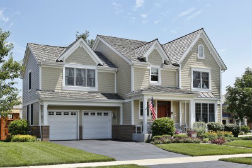 December home prices continued to rise per December readings for Case-Shiller’s National and 20-City Home Price Indices. On average, national home prices increased by 5,80 percent year-over-year and exceeded November’s year-over-year reading of 5.60 percent. The 20 City Index, which analysts follow more closely than the National Home Price Index, posted a year-over-year gain of 5.60 percent in December, which exceeded an expected reading of 5.40 percent and November’s year-over-year reading of 5.20 percent growth.
December home prices continued to rise per December readings for Case-Shiller’s National and 20-City Home Price Indices. On average, national home prices increased by 5,80 percent year-over-year and exceeded November’s year-over-year reading of 5.60 percent. The 20 City Index, which analysts follow more closely than the National Home Price Index, posted a year-over-year gain of 5.60 percent in December, which exceeded an expected reading of 5.40 percent and November’s year-over-year reading of 5.20 percent growth.
West Posts Highest Home Price Growth
The West continued to dominate home price growth rates with Seattle, Washington posting 10.80 percent year-over-year growth while Portland, Oregon and Denver, Colorado posted year-over-year gains of 10.00 percent and 8.90 percent respectively. New York, New York posted the lowest year-over-year gain in home prices with year-over-year growth of 3.10 percent. Washington, D.C. followed with 4.20 percent growth in home prices; Cleveland, Ohio posted a year-over-year gain of 4.40 percent.
Home Price Growth Rate Doesn’t Indicate a New Housing Bubble
David M. Blitzer, Chairman and Managing Director of the S&P Indices Committee that oversees Case-Shiller Home Price Indices, said that home prices adjusted for inflation averaged a year-over-year growth rate of 3.80 percent. While higher than average, Mr. Blitzer said the current rate of home price growth “is not alarming.”
While rising home prices may sideline moderate-income and first-time homebuyers, high demand for homes and ongoing shortages of homes for sale continued to drive prices up. Real estate pros typically consider a six-month supply of available homes an average inventory reading, but the current supply of homes for sale averages three to four months. Recently rising mortgage rates were also cited as contributing to higher home prices; rates for a 30-year fixed rate mortgage average 4.20 percent as compared to 6.40 percent on average since 1990.
Questions of affordability and rising rates could impact first-time buyers who enable current homeowners to sell their homes and “move up.” If large numbers of first-time buyers are sidelined by rising home values and mortgage rates, home prices could be impacted if investors and cash buyers fail to fill in gaps between high home prices and affordability.
 Home increased in October according to Case-Shiller’s 20City Home Price Index. Home prices rose from September’s annualized reading of 5.40 percent to 5.60 percent. Factors contributing to rising home prices include stronger economic conditions and outlook along with short inventories of available homes coupled with high demand. On average, October home prices rose 5.10 percent on seasonally adjusted annual basis, which was unchanged from September’s reading.
Home increased in October according to Case-Shiller’s 20City Home Price Index. Home prices rose from September’s annualized reading of 5.40 percent to 5.60 percent. Factors contributing to rising home prices include stronger economic conditions and outlook along with short inventories of available homes coupled with high demand. On average, October home prices rose 5.10 percent on seasonally adjusted annual basis, which was unchanged from September’s reading.